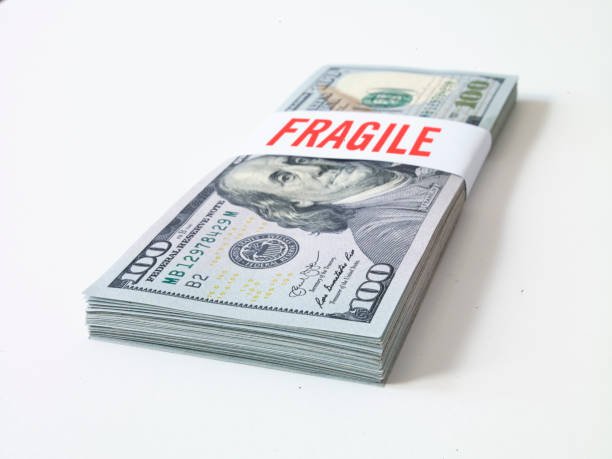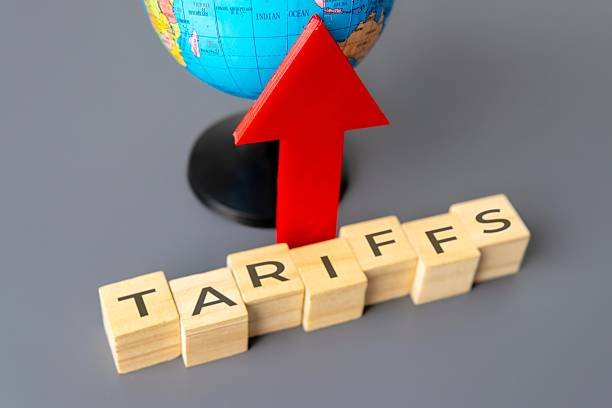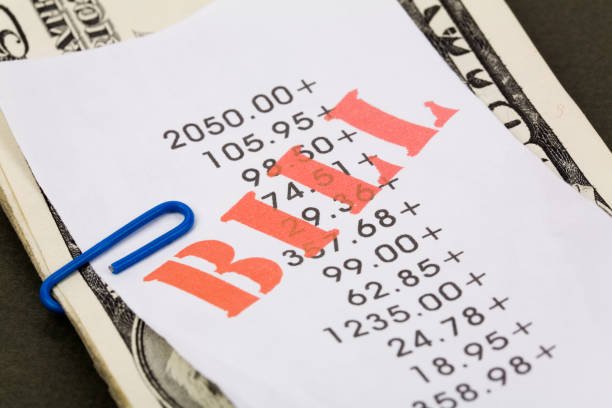Why 2025 Demands an Anti-Fragile Cash Strategy
The foundational wisdom of personal finance—the recommendation to maintain three to six months of living expenses in a basic savings account—is structurally obsolete for the economic realities facing US consumers in 2025. For the financially sophisticated individual, especially the US traveler, expatriate, or location-independent professional, a static, low-interest cash pile fundamentally represents a depreciating asset.[1] The current economic climate requires a dynamic, anti-fragile cash strategy to ensure capital reserves not only survive unexpected shocks but also maintain their purchasing power amidst persistent inflationary pressure.
The core challenge for US households heading into the middle of the decade is navigating rising costs driven by geopolitical trade policies and tariffs, alongside an anticipated softening of the labor market.[2, 3] This confluence of stubborn inflation and economic deceleration creates significant stagflationary pressure.[3] When inflation persists while economic growth slows, the financial strain on households is compounded: the cost of living increases while the duration required to find new, equivalent employment lengthens.[4] This comprehensive guide provides seven strategic financial shields to protect capital, maximize liquidity, and secure a truly Resilient Emergency Fund in a Volatile Economy (2025 and beyond). By understanding the economic backdrop and optimizing asset placement, financial peace of mind, both at home and abroad, becomes attainable.[5]

Table of Contents
Section 1: The New Reality: Navigating the 2025 Volatile US Economy
The planning horizon for a secure emergency fund must be grounded in an accurate assessment of near-term macroeconomic risks. The 2025 US economic environment is characterized by mixed signals, requiring savers to adopt defensive, yet optimization-focused, strategies.[6]
1.1 Why Traditional 3-Month Funds are Insufficient for 2025 Risks
Analysis of Core Inflation and Tariffs: The Persistent Erosion of Cash Value
The primary threat to any emergency reserve held in low-interest cash is the erosion of purchasing power due to persistent inflation. Current forecasts indicate that price pressure will continue to be a significant factor throughout 2025 and into 2026. Specifically, core CPI inflation is projected to accelerate, jumping to 3.6 percent in the third quarter of 2025 (2025Q3) and reaching a peak of 3.8 percent by the second quarter of 2026 (2026Q2).[7] While headline inflation is expected to lag due to subdued energy and food prices, the underlying core inflation, which measures persistent price changes, remains high.[7]
This inflationary trajectory is heavily influenced by policy factors, notably the expected filtering through of broad-based tariffs into the economy.[7] As these tariffs translate into higher input costs, businesses face a stark choice: absorb the costs or pass them through to consumers.[6] Economic analysis suggests that the pass-through effect will be substantial, causing the Federal Reserve’s preferred inflation measure, the Personal Consumption Expenditures (PCE) price index, to rebound to the 2.8–3.0 percent range year-over-year during 2025Q3–2026Q3, up from a recent 2.5 percent.[7]

For the average saver, these figures mean that holding cash in a standard savings account—which might yield 0.5% APY—guarantees a net loss in purchasing power of 2.3% to 3.3% annually.[8] Therefore, the placement of the emergency fund becomes a non-negotiable strategic decision; the cash must be placed in vehicles that earn a yield matching or exceeding core inflation to successfully preserve capital value.[9] If the cash reserve is not actively optimized, its real value is diminished with every passing month, making the fund smaller relative to the cost of future necessities.
The Unemployment Headwind: Preparing for Job Market Slowdown
Beyond inflation, the risk of a job market downturn requires a larger financial safety net. Economic models forecast that the current environment, driven by higher inflation and rising unemployment, will eventually necessitate policy correction.[2] While market optimism has been bolstered by AI growth and expectations of lower interest rates [3], these may not be enough to counteract looming economic headwinds.[2]
Forecasts suggest the possibility of the economy entering a recession in the fourth quarter of 2026, with the unemployment rate averaging 5.0 percent in 2027, a measurable increase from 4.2 percent in 2025.[2] While the Federal Reserve may initiate interest rate cuts in 2025 (partially characterized as “risk management cuts” to forestall labor market slowing [10]), this action does not guarantee stability and may even accelerate inflation under certain scenarios.[2] Job loss is a primary catalyst for needing the emergency fund.[11] The time required to find new employment is a key factor in determining fund size.
Stagflationary Pressure: Combining High Prices and Economic Weakness
The confluence of stubborn prices (inflation) and slowing economic conditions (unemployment/weakening demand) creates a challenging stagflationary environment.[3] This environment dramatically affects the necessary size of a resilient emergency fund. If prices remain stubbornly high while economic conditions worsen, the required cash buffer must accommodate both higher monthly costs and a longer period of income replacement.[3]
If the job search takes four to six months—which is a common duration cited by individuals who have experienced recent layoffs [4]—the cost of supporting that runway will be significantly higher than in a low-inflation environment. This compounded risk is particularly salient for individuals with single-income sources or variable income streams, such as the target audience of digital nomads and self-employed professionals.[9] The increased uncertainty pushes the necessary safety net well beyond the traditional six-month mark toward a 9-to-12 month runway.
1.2 Defining Your Financial Safety Net: E-Fund vs. Sinking Funds
To ensure that the primary safety net remains intact for genuine crises, it is necessary to rigorously define the use of different savings pools. The emergency fund is explicitly reserved for unexpected, crisis-level events—major medical emergencies, job loss, or a house fire.[12, 13]
By contrast, a sinking fund is a strategy aimed at achieving specific, planned financial goals, such as saving for a major vacation, future house renovations, or annual expenses like insurance premiums that are not incurred monthly.[12] These funds should be strictly separated to prevent co-mingling, making it easier to monitor progress toward each goal.[12, 14]
A crucial bridge between these two concepts is the Rainy Day Fund. This is a smaller, highly accessible reserve, typically containing $250 to $1,000.[15] Its purpose is to handle minor, unplanned expenses that crop up in everyday life, such as a surprise car repair, fixing a broken appliance, or an unexpected medical co-pay.[15, 16] By maintaining this small buffer, individuals avoid tapping the much larger, crisis-level emergency fund for routine, minor setbacks, thereby preserving the principal for major disruptions.[15]

Section 2: Calculating Your Optimal Resilient Emergency Fund Size
The calculation of the appropriate emergency fund size is not a one-size-fits-all exercise but rather a personalized assessment of individual risk factors against the current economic volatility.
2.1 The 6-Month to 12-Month Rule: When to Save More
While 3–6 months of essential living expenses is the widely cited rule of thumb [9, 17, 18], a robust analysis of individual risk factors often mandates a larger reserve, particularly in the face of the 2025 economic forecasts.
Factors Increasing Required Savings (The Volatility Multiplier)
Several risk factors necessitate employing the “Volatility Multiplier,” pushing the required safety net towards nine or even 12 months of expenses:
- Income Volatility and Job Security: Self-employed professionals, freelancers, single-income households, or individuals whose job skills are highly specialized (making the re-employment search longer) face greater liquidity needs.[9, 18] For the digital nomad audience, whose income streams can fluctuate widely based on client contracts or market shifts, a 9-to-12 month fund is a more appropriate minimum.[9]
- High Debt Load: Carrying significant consumer debt (excluding a mortgage) means that unexpected shocks are more likely to push the individual into high-interest spirals.[13] A larger cash fund is required to meet minimum payments during a crisis without accruing more debt.[18]
- Dependents and Insurance Coverage: Households with multiple dependents and those with less comprehensive insurance (health, home, auto) require a larger financial buffer to manage unforeseen costs without compromise.[9, 18]
Calculating “Essential Living Expenses” (The True Cost)
The foundation of the emergency fund calculation is accurately identifying the baseline monthly spending. This calculation should focus exclusively on mandatory costs—the expenses that cannot be avoided if income ceases.[19] These include:
- Housing (Rent or Mortgage payments).[17]
- Utilities (Gas, electric, water, internet/phone).[17]
- Insurance premiums (Health, car, home).[17, 19]
- Minimum required debt payments (Credit cards, loans).[17]
- Basic Groceries (excluding non-essential dining out).[17, 19]
It is essential to calculate the average monthly spend over a 6-to-12 month period, rather than just the previous month’s statement.[19] This strategy accounts for cyclical or annual expenses, such as vehicle registration or semi-annual insurance payments, that might skew a short-term monthly average.[19] The amount calculated is then multiplied by the target runway (6, 9, or 12 months) to establish the savings goal. For instance, if essential expenses total $3,000 per month, a six-month goal requires **$18,000** in liquid reserves.[19]
The Peace of Mind Premium: The Behavioral Economics of Savings
The value of a robust emergency fund extends far beyond mere financial metrics; it serves as a powerful tool for behavioral health and overall well-being. Research published in 2024 by Vanguard demonstrated that emergency savings are the strongest predictor of financial well-being.[5]
Having even a modest sum of $2,000 set aside provides a critical buffer, significantly reducing the likelihood of financial distress.[5] Those who have achieved this initial goal report a 21% increase in financial well-being.[5] Furthermore, securing three to six months of expenses is linked to an additional 13% increase in financial well-being, even when controlling for other factors like income and debt.[5] This buffer allows individuals to spend significantly less time worrying about their finances—about four hours less per week—freeing up mental energy that can be directed toward professional growth or enjoying life.[9]
For the traveler or digital nomad, this mental resilience is critical. It provides the psychological runway necessary to look for the right professional role, pivot client strategies, or sustain extended travel without the panic that forces premature settlements or a hurried return home.[4]
2.2 Rapid Build Strategies: Accelerating Savings in a High-Cost Environment
Recognizing that accumulating a multi-month reserve can feel daunting, particularly when 37% of Americans still lack $400 in liquid savings [16, 20], the strategy must prioritize achievable, incremental goals.
The initial step is to rapidly achieve a $500–$1,000 Rainy Day Fund.[17, 21] Once this first benchmark is met, the process transitions to consistency and automation. Establishing automatic transfers from payroll or checking accounts to a dedicated savings account ensures contributions are made without requiring active decision-making.[18, 21] This approach is particularly effective when paired with identifying and eliminating non-essential spending, such as unused subscriptions or discretionary dining, and redirecting those funds to the emergency reserve.[21]

Need more inspiration for cutting back? Explore <a href=”https://eliteonabudget.com/wp-admin/post.php?post=3265&action=edit”>7 Affordable Fall Fashion Trends 2025 You Can Actually Wear (All on Amazon!)</a> to save money without sacrificing style. To visually track your budget and stay accountable, consider using a dedicated financial planner, such as the <a href=”https://www.amazon.com/Best-Selling-Travelers-Budget-Planner-2025″ target=”_blank”>Best-Selling Zero-Budget Planner for Travelers</a>.
Furthermore, new legislative changes provide innovative avenues for accumulation. The SECURE 2.0 Act, which took effect in January 2024, introduced provisions allowing employees to make penalty-free withdrawals of up to $1,000 from their retirement plans for emergency needs, alongside the establishment of standardized in-plan emergency savings solutions.[20] The increasing trend of employers offering emergency savings programs is significant, as over 72% of workers express willingness to participate.[20] These workplace solutions offer negotiated, favorable terms and leverage simple payroll deductions, rapidly increasing the employee’s financial security.[22]
The availability of these in-plan savings mechanisms is designed to address a critical systemic risk: workers with inadequate emergency funds are 13 times more likely to take a hardship withdrawal from their 401(k)s.[20, 22] By utilizing these options, households secure their immediate cash flow needs while simultaneously protecting their long-term retirement savings trajectory.
Section 3: Strategic Placement: Vehicles for Liquidity and Inflation-Hedging
The decision of where to hold the emergency fund is arguably as important as determining its size, especially in a high-inflation environment. The strategy must utilize a tiered system that balances maximum liquidity (Tier 1) with inflation-adjusted, tax-optimized returns (Tier 2).
3.1 Tier 1 Liquidity: High-Yield Savings Accounts (HYSAs)
High-Yield Savings Accounts (HYSAs) should constitute the first tier of the emergency fund—the portion required for immediate access, typically 1 to 3 months of expenses. These accounts, commonly offered by online banks, provide significantly higher interest rates than traditional brick-and-mortar savings accounts.[23]
Analyzing Competitive APYs (2025 Data)
High-yield savings accounts are desirable because they are fully insured by the Federal Deposit Insurance Corporation (FDIC) up to $250,000 and offer frictionless withdrawals, meaning cash can typically be accessed within 24 to 48 hours.[24] Market forecasts for late 2025 still project competitive rates, with some top-performing online banks offering rates in the range of 4.50% to 5.00% APY, as seen with institutions like Varo Bank, AdelFi, and SoFi.[25, 26] Money market accounts (MMAs) offer a similar profile, often providing yields around 4.40% APY and the additional flexibility of check-writing privileges or debit card access, serving as an effective hybrid option.[27]
Pros and Cons of HYSAs
| Pros | Cons | |
|---|---|---|
| Liquidity | Highest liquidity; money is accessible instantly or within one day.[24] | Interest income is fully subject to federal, state, and local income taxes.[24] |
| Safety | Fully guaranteed by FDIC up to $250,000.[24] | Yields may fluctuate quickly following Federal Reserve rate cuts.[28] |
| Access | Minimal or no minimum opening deposit requirements for many top accounts.[25, 26] | The fully taxable nature significantly reduces the net return in high-tax states.[24] |
The primary financial drawback of the HYSA for large sums is the tax liability. The interest earned is taxed as standard income at the federal, state, and local levels.[24] For savers residing in high state-income tax jurisdictions, this tax drag can dramatically reduce the net yield, making alternative vehicles more appealing for the Tier 2 reserve.
3.2 Tier 2 Optimization: Short-Term Treasury Bills (T-Bills)
Short-term Treasury Bills (T-Bills) are the ideal strategic vehicle for the secondary portion of the emergency reserve (e.g., months 4–12 of expenses). These instruments, which are obligations of the US government maturing in one year or less, provide a unique combination of safety, liquidity, and tax efficiency.[29, 30]
Understanding the Zero Default Risk and Liquidity
T-Bills are one of the safest financial instruments available, carrying zero default risk because they are backed by the full faith and credit of the US government.[29] They are highly liquid, allowing investors to buy and sell them with ease in the secondary bond market before maturity if necessary, although early sale might involve price fluctuations.[29, 30] The low minimum investment requirement (often starting at $100) makes them highly accessible to most savers.[29]
The Critical Tax Advantage (The US Saver’s Edge)
The most compelling reason for the US saver to prioritize T-Bills for Tier 2 savings is the tax treatment. The earnings generated from T-Bills are exempt from state and local income taxes.[24, 31] This tax benefit is especially powerful for individuals in states with high income tax rates, where the net, after-tax yield of a T-Bill often surpasses that of a fully taxable HYSA, even if the HYSA has a slightly higher quoted APY.[31]
This tax-optimization strategy directly contributes to maintaining capital purchasing power in an inflationary environment. By maximizing the take-home return, the saver is better positioned to keep pace with the 3.0%+ core inflation expected throughout 2025.[7]
Table 1: HYSA vs. T-Bill: Liquidity, Yield, and Tax Implications for US Savers
| Feature | High-Yield Savings Accounts (HYSA) | Short-Term Treasury Bills (T-Bills) |
|---|---|---|
| Liquidity | Highest (Instant/1-day transfer) [24] | High (Matures in 4-52 weeks; secondary market access) [29] |
| Safety/Risk | Extremely low (FDIC insured up to $250k) [24] | Zero default risk (US Government backed) [29] |
| Federal Tax | Standard Income Tax | Standard Income Tax [24] |
| State/Local Tax | Fully Taxable [24] | Exempt from state and local taxes [31] |
| Ideal Use Case | Immediate cash needs (Tier 1: 1-3 months) | Inflation and tax-efficient reserves (Tier 2: 4-12 months) [31] |
Section 4: Advanced Strategy: Implementing a Treasury Bill Ladder for Predictable Access
For the strategic investor holding significant emergency reserves, structuring T-Bills into a ladder offers a sophisticated method to maximize yield while ensuring predictable liquidity. This strategy is particularly powerful in the volatile 2025 environment, where interest rate fluctuations are expected.
4.1 How T-Bill Laddering Balances Returns and Access
A T-Bill ladder involves spreading the investment across several T-Bills with staggered maturity dates.[32] The primary goal of laddering is two-fold: to mitigate interest rate risk and to blend short- and long-term maturities for an enhanced, yet regular, cash flow.[33]

The strategy addresses interest rate uncertainty in a critical way. While investors are generally seeking high yields now, the Federal Reserve is expected to consider cutting rates in 2025 in response to labor market concerns.[10] If rates fall, HYSAs will drop their APYs quickly.[28] By contrast, the T-Bill ladder structure allows the investor to lock in the currently favorable yields for a longer duration (up to 12 months).[33]
The inherent mechanism of the ladder ensures that as each “rung” matures, the principal and interest are released back to the investor. This creates a continuous, predictable stream of accessible cash.[32, 34] The investor then reassesses the market conditions. If rates have risen, the matured proceeds are reinvested into a new long-term rung at the higher rate. If rates have fallen, the current returns are protected by the remaining longer-term bonds still held in the ladder.[33] This strategy provides an anti-fragile defense against the uncertainty of future interest rate movements.
4.2 Step-by-Step Guide to Building a Short-Term Ladder
Implementing a T-Bill ladder requires precise planning to balance the desire for higher yields from longer maturities with the paramount need for liquidity.
Step 1: Forecasting Needs The saver must rigorously forecast immediate cash needs. Review trailing three-month expenditures and any anticipated short-term expenses for the next two months.[35] The cash required for this immediate, short-term liquidity should be segregated and kept in the Tier 1 HYSA.[35] Only the reserve funds that are unlikely to be needed within the immediate three to four months should be allocated to the T-Bill ladder investment.[32, 35]
Step 2: Structuring the Rungs Select T-Bill maturities that create staggered timelines. Standard short-term ladder maturities typically include 4-week, 13-week (3-month), 26-week (6-month), and 52-week (1-year) T-Bills.[32] The total investable amount should be divided equally among these maturity dates. For emergency funds, it is recommended that more than 50% of the cash allocated to T-Bills should mature in under six months to ensure high periodic liquidity.[35]
Example Rung Structure: If $20,000 is allocated to the ladder, the investor might place $5,000 into a 4-week bill, $5,000 into a 13-week bill, $5,000 into a 26-week bill, and $5,000 into a 52-week bill.[34]
Step 3: Reinvesting and Maintaining Liquidity When the first T-Bill (the 4-week rung in the example) matures, the investor receives the principal and accrued interest. At this time, the investor assesses the current interest rate environment.[34] If rates are still favorable, the funds are immediately reinvested into a new bill at the long end of the ladder (i.e., a new 52-week T-Bill). This action rotates the cash and ensures the continuous cycle of maturities and liquidity.[32] If market rates are plummeting, the funds can be moved back into a competitive HYSA or MMF.[34]
Section 5: The Global Citizen’s Blueprint: Financial Resilience for Travelers
For the US traveler, expatriate, or location-independent professional—the global citizen—financial resilience requires tailored infrastructure that transcends national banking systems and integrates seamlessly with specialized risk management tools.
5.1 Multi-Currency Strategies for Location-Independent Professionals
The challenge for the digital nomad is two-fold: managing fluctuating exchange rates and avoiding punitive foreign transaction fees imposed by traditional hometown banks.[36, 37] The financial infrastructure must be as mobile as the individual.

Strategic Account Structure (The Three-Tier Model)
Financial independence while traveling is best maintained through a structured, multi-currency system [37]:
- Home Base Account: Primary US checking/brokerage account where US-sourced income arrives and tax obligations are managed.
- Global Emergency Account: This crucial component holds the liquid emergency fund in a stable currency (often USD or EUR) but is housed within a digital platform accessible worldwide.
- Regional/Spending Accounts: Accounts used for day-to-day spending in the local currency of the current region.
To facilitate global financial management, location-independent professionals should utilize financial technology platforms, often referred to as neobanks, such as Wise, Revolut, and N26. These neobanks allow users to hold and manage funds in multiple currencies, facilitating conversion at market rates with minimal fees—a stark contrast to the 1–3% foreign transaction fees typical of traditional institutions.[37] This infrastructure ensures that when an emergency strikes abroad, the US-based cash reserve is instantly and efficiently convertible.
5.2 Integrating Insurance: When Cash Reserves are Not Enough
A fully resilient emergency plan requires the synergy of liquid cash reserves and comprehensive insurance coverage. It is vital to understand that the emergency fund covers what insurance does not—specifically economic shocks and policy gaps.
Travel Insurance vs. Digital Nomad Health Insurance: A Critical Distinction
Travelers must distinguish between standard travel insurance and specialized digital nomad health insurance.
- Traditional Travel Insurance generally covers short periods and focuses on unforeseen medical emergencies, trip cancellations, or interruption events, such as a family member’s illness or a sudden layoff.[11, 40, 41]
- Digital Nomad Health Insurance is explicitly designed for long-term travelers (months to years).[39, 41] These plans offer broader coverage, including routine check-ups, preventative care, and sometimes even coverage for pre-existing conditions or electronic devices. This long-term coverage is essential for those living the nomadic life.
Key Policy Gaps: When Cash Must Bridge the Difference
The cash reserve of the emergency fund becomes the “policy gap filler,” covering expenses that specialized insurance will not, particularly economic and administrative costs:
- Income Stabilization: No insurance policy covers the loss of employment or prolonged lack of client work; this remains the sole responsibility of the emergency fund runway.[4]
- Policy Exclusions and Deductibles: While travel insurance covers emergency medical evacuation, the traveler is always responsible for deductibles, co-pays, and any expenses that exceed the policy’s limits.
- Economic Exclusion: Most travel insurance policies specifically fail to cover cancellations or interruptions related to general disease avoidance, government-issued stay-at-home orders, or new pandemic outbreaks if the trip was already booked. In such cases, the financial losses related to non-refundable reservations or the cost of immediate re-routing must be covered by the liquid emergency fund.
Table 2: Emergency Coverage Comparison: Fund vs. Travel Insurance vs. Nomad Health Insurance
| Type of Expense Covered | Resilient Emergency Fund (Cash Reserve) | Traditional Travel Insurance | Digital Nomad Health Insurance |
|---|---|---|---|
| Income Loss (Job/Client) | Yes (Primary Financial Runway) [4] | Limited (Layoff clauses are rare and strict) | No |
| Emergency Medical Evacuation | Only self-funded costs (Very high capital need) | Yes (Specific benefit) | Yes (Long-term, specialized benefit) |
| Routine/Preventative Care | Yes (Co-pays/Gaps) | No | Yes (Often included) |
| Protection Against Inflation | Yes (If stored in HYSA/T-Bills) [8] | No | No |
| Geopolitical/Pandemic Cancellation | Yes (Covers financial losses) | Often Excluded (e.g., disease avoidance/shutdowns) | N/A |
Section 6: Maintaining and Protecting Your Emergency Fund
Once the target size for the resilient emergency fund (6–12 months of expenses) has been reached and strategically placed, the focus shifts to maintenance, protection, and avoiding common errors associated with cash reserves.
6.1 The Psychological Trap: Avoiding Over-Saving in Cash
A common mistake for fiscally conservative savers is the accumulation of excessive cash reserves—holding 12 or more months of expenses in highly liquid accounts. While the goal is security, oversaving in cash carries significant financial opportunity costs, especially in a persistent inflationary environment.[1]
Every dollar held above the necessary reserve (typically 9 to 12 months, based on risk profile) is a dollar that is not compounding at its maximum potential.[1, 34] Financial experts recommend that once the necessary liquidity buffer is secured and optimized (in HYSA/T-Bills), any additional savings should be immediately redirected toward long-term goals and growth-oriented investments, such as diversified index funds, stocks, and bonds.[9, 23, 16] These risk-adjusted assets have a higher potential return designed to significantly outpace the expected 3.0%+ core inflation rate over a long horizon.[7]
6.2 The Post-Crisis Refill: Prioritizing Replenishment
The resilient emergency fund is a dynamic safety net, built to be used when truly necessary.[17] The single most critical step following an emergency drawdown—whether due to job loss, a major medical event, or an unexpected repatriation cost—is immediate and disciplined replenishment.[18]
The existence of a dedicated emergency reserve fundamentally protects the investor’s long-term financial health by preventing the need to rely on high-interest credit products or, worse, tapping into retirement savings.[18, 19] Tapping into retirement accounts, such as 401(k)s, often involves potential tax penalties and means selling investments when markets may be down, thereby missing out on future recovery and growth. By prioritizing the refill of the liquid reserve, the investor ensures that this vital first line of defense remains operational, insulating the long-term wealth from short-term shocks.
Section 7: Resilient Emergency Fund FAQ
This section addresses common questions about emergency fund management, liquidity, and strategy in a high-volatility economic climate, providing clarity and reinforcing the authoritative nature of the guide.[15, 7]
7.1 What is the primary difference between a T-Bill and a High-Yield Savings Account for emergency funds?
The fundamental difference lies in tax treatment and risk profile for large balances. While both are highly safe and liquid:
- HYSAs are fully subject to federal, state, and local income taxes on interest earned, but offer instant access (Tier 1).
- T-Bills are exempt from state and local income taxes, offering a critical tax-efficiency benefit in high-tax states, making them superior for larger, long-term reserves (Tier 2).

